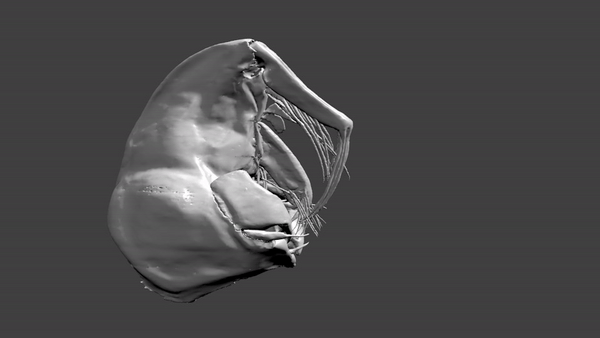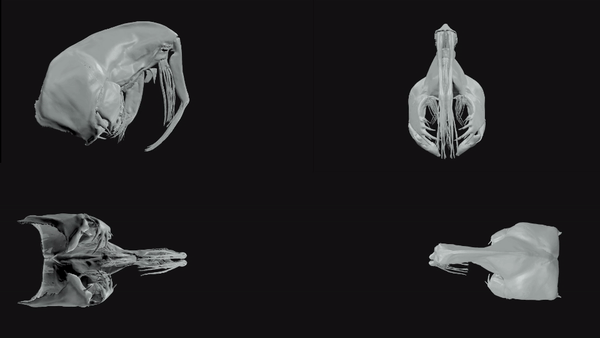'Phantom' Predator's Speedy Dance of Death Is Both Graceful and Creepy

In lakes around the world, fearsome creatures attack with strikes that were recently found to be among the fastest in the animal kingdom.
High-speed footage showed the nightmarish swimmers in action; multiple-jointed mouthparts extended from their heads, revealing branching structures to catch and hold squirming prey — even when the prey sprouted "teeth" from its neck.
Fortunately for humans, these predators are positively puny, measuring just a fraction of an inch. They are the young of tiny flies in the Chaoborus genus; also known as phantom midge larvae or glassworms, they are so-named for their transparent bodies. And when researchers turned special cameras on the tiny phantom midge larvae, they discovered that the creatures' deadly attack was among the fastest seen in animals. [Tiny Grandeur: Stunning Photos of the Very Small]
Atop a glassworm's see-through body, its head is "a complex catching basket" tipped with an array of appendages for quickly trapping small crustaceans, scientists reported in a new study.
Using high-speed video and computed X-ray tomography (CT) scans, the researchers recorded glassworms as they caught water fleas. The scientists then built 3D computer models of the "basket" of structures on the glassworms' heads, identifying grasping antenna, bristly "knife hairs," powerful mandibles and a finger-shaped structure tipped with bristles and spiky "thorns."
When a water flea floated close by, the waiting glassworm would strike, its "basket" opening outward and then quickly contracting, pushing the flea toward the glassworm's waiting mouth. The tiny predator would stuff the water flea into its esophagus, using alternating movements of its jaws; while this "chewing" action didn't seem like it was meant to shred the water fleas, they would sometimes burst from the friction, according to the study.

A glassworm's average strike lasted about 14 milliseconds (a millisecond is one-thousandth of a second) "from start of movement to prey contact" — one of the fastest attack moves in animals, the researchers wrote.
Sign up for the Live Science daily newsletter now
Get the world’s most fascinating discoveries delivered straight to your inbox.
By comparison, the attack of the praying mantis Coptopteryx viridis takes 42 milliseconds (ms). Scientists have also recorded phenomenally speedy strikes in mantis shrimp (4 to 8 ms) and in trap-jaw ants and some trap-jaw spiders (less than 1 ms), according to the study.
Despite the phenomenal speed of the glassworms' strike, water fleas aren't defenseless; special "neck teeth" pop out under their heads when a threat appears. When water fleas did not deploy their teeth, glassworm attacks succeeded approximately 80 percent of the time. However, if water fleas displayed their spiky necklace of teeth, glassworms captured only around 50 percent of their prey, the scientists reported.
The findings were published online March 22 in the journal PLOS ONE.
- In Photos: Tiny Plankton Show Off Advanced Weaponry
- Photos: Ancient Shrimp-Like Critter Was Tiny But Fierce
- Images: Tiny Life Revealed in Stunning Microscope Photos
Originally published on Live Science.

Mindy Weisberger is an editor at Scholastic and a former Live Science channel editor and senior writer. She has reported on general science, covering climate change, paleontology, biology, and space. Mindy studied film at Columbia University; prior to Live Science she produced, wrote and directed media for the American Museum of Natural History in New York City. Her videos about dinosaurs, astrophysics, biodiversity and evolution appear in museums and science centers worldwide, earning awards such as the CINE Golden Eagle and the Communicator Award of Excellence. Her writing has also appeared in Scientific American, The Washington Post and How It Works Magazine.
